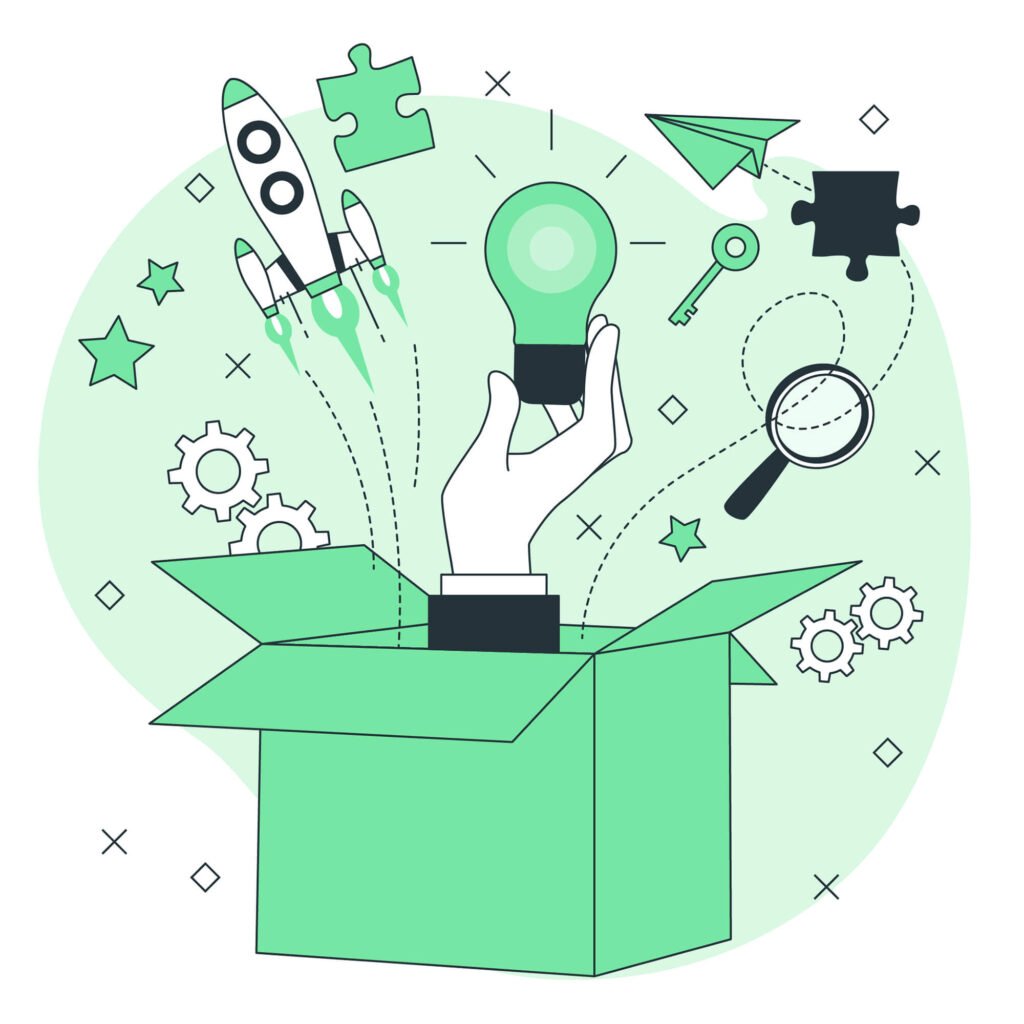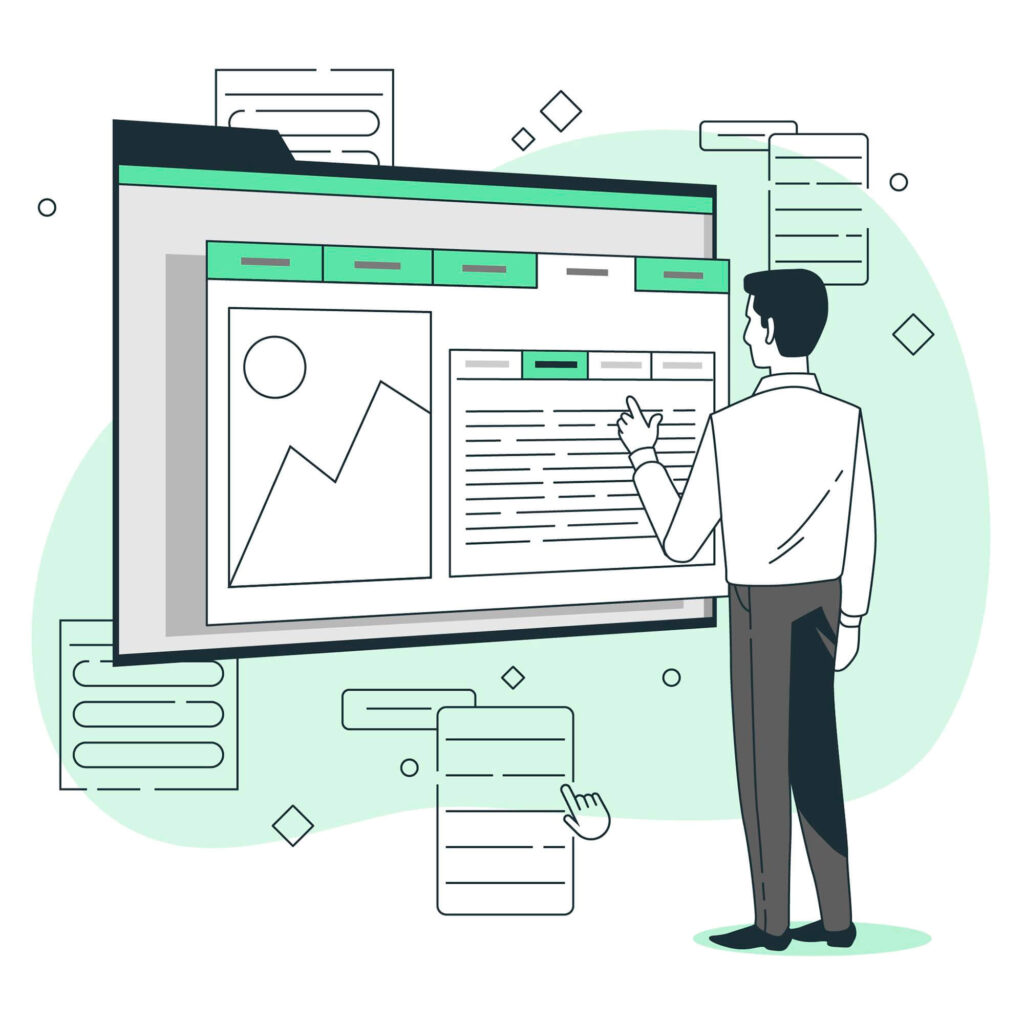In the article, we provide steps on how to start a business. Starting a business is an adventure full of challenges and opportunities as you begin your journey as an entrepreneur. At this stage, it is important to learn to plan well and make rational decisions, but the most important thing is to have a clear goal and motivation. This can be a wonderful time when you can create your vision and start working towards your goals. In fact, starting a business is often like a painting that is created from new ideas, determination and ambition.

1. Thinking and forming an idea
Creative process and idea generation
The process of generating proposals and new ideas, which involves solving problems or finding new opportunities in the market.
Evaluation and analysis of the idea
The stage of critical idea analysis, which includes its suitability, uniqueness, correspondence to market needs and business potential:
- Suitability for purposes: Does the idea meet the intended goals and vision? Is it compatible with the long-term plans and strategy of the business?
- Technical feasibility: Is the idea technically feasible? Are the necessary resources and competences available for its implementation?
- Innovativeness: How unique is the idea in the marketplace? Does it have something new or different from existing solutions?
- Competitive advantage: Does the idea provide a competitive advantage? Does it allow you to stand out from other market participants?
- Market demand: Does the idea meet the current market demand? Does it address specific market needs or problems?
- Customer reaction: How would potential customers react to this idea? Would it be valuable to them?
- Profitability: What is the potential revenue and profit from this idea? Can it be profitable?
- Rinsing options: Does the idea have the potential to grow and expand in the future? Is it suitable for expansion and a larger market?
2. Business planning and strategy development
Setting business goals
- Sales growth: Increase monthly sales by 20% in the next 6 months.
- Increasing market share: Expand market share and achieve 15% share in a specific sector per year.
- Increasing the number of users: Attract 1,000 new registered users per quarter.
- Productivity increase: Reduce production costs by 10% without compromising quality within six months.
- Development of new products: Launch two new products with initial sales of at least 500 units per quarter.
Activity planning and structuring
A detailed business plan that includes the business structure, organization chart and operational plan details.
1. Company overview and strategic vision:
- A description of the company, including its mission and vision.
- Main objectives and strategic priorities.
- Brief summary of business history and setting future goals.
2. Activity structure and organizational chart:
- Definition of business structure: hierarchy, departments, functions.
- Job descriptions, duties and responsibilities.
3. Product or service description:
- A detailed description of the product or service, its uniqueness and benefit to the customer.
- Plans for product or service development, quality control and improvement.
4. Market analysis
- Market Research: Market Size, Growth Opportunities, Competition, Trends.
- Customer segmentation strategy and refinement.
5. Marketing and sales strategy
- Planning of sales channels and marketing.
- Strategy of advertising, branding, communication with customers.
6. Plan of operations
- Description of business processes: production, supply, logistics.
- Description of technology and required resources (human, financial and physical assets).
7. Financial analysis and forecasts
- Profitability forecasts, income and expenditure forecasts, investment planning.
- Budgeting, cash flow forecasts, balance sheet.
8. Risk and profit management strategies
- Risk analysis and its management strategy.
- Profit sharing policy and investment plan description.
3. Resource planning and evaluation
Identification of resources
Identifying what types of resources are needed: financial, human, technological, time, knowledge, etc.
Efficient use of resources
The planning stage, which includes the rational and purposeful use of resources to achieve business goals.
This framework helps organize important topics about business idea generation, evaluation, and business plan development.

4. Market analysis and research
Market overview and potential assessment
An overview that includes market size under study, growth trends, competitive analysis and opportunities.
User needs and behavior research
A detailed study of the needs, behavior and preferences of the target audience in order to understand how they respond to the offers in the market.
5. Target audience segmentation and identification
Demographic segmentation
Breakdown of user groups based on demographic data such as age, gender, education, type of residence.
Psychographic and behavioral characteristics
Segmentation based on users' lifestyles, interests, values and behavioral characteristics.
6. Target audience profiling and customization of services
User profiling
Creating specific user portraits based on their needs, preferences and behavior.
1. Market research and data analysis:
- Surveys, research and analysis: Collect information about your existing customers or potential customers to learn their demographics, behaviors and preferences.
- Data analysis: Use data analysis tools to isolate common habits, patterns of behavior and characteristics.
2. Creating user personas:
- Demographic information: Include information about age, gender, employment, marital status, and geographic location.
- Identification of needs and goals: Determine what your users' goals, needs, and problems are that they are trying to solve.
- Behavioral and preference analysis: Pay attention to how they use your product or service, what channels and tools they choose, how they make decisions.
3. Persona description:
- Creation: Based on the collected data, create specific personas that represent your typical customers. Give them a name, age, job, hobbies, etc.
- Deep analysis: Describe in detail their needs, problems, expectations and how your product or service can help them.
4. Development of usage scenarios:
- Description of scenarios: Describe how these people use your product or service, what their most likely actions are, and the benefits they experience.
5. Use of personas in business strategies:
- Persona integration: Involve people in your business strategy, marketing campaigns, product development, and service development so that your actions reflect real customer needs and behaviors.
Customization of products and services
Adaptation and customization of services and products, taking into account the created user profiling and segmentation.
This framework helps organize important topics around market analysis, user needs and behavior research, and target audience segmentation.
7. Business model formatting process
Types of business model
Definition and examples of different business models: B2B (Business to Business), B2C (Business to Customer), C2C (Customer to Customer) etc., considering their advantages and disadvantages.
Creating a product or service
The planning and development phase to create a product or service that meets market needs.

8. Market assessment and analysis of the practical application of the business model
Analysis of market needs and trends
Identifying market needs and assessing trends to ensure that the business model fits the current market context.
Analysis of competition and highlighting of advantages
Analyzing competitors and identifying distinctive strengths to highlight the strengths of your business model.
9. Legal requirements
Regulation of company forms and law
Legislation and rules of business activity
Overview of business legislation that regulates a specific activity or sector.
10. Business registration
Business registration process
The name of the business is chosen and the registration process is carried out, from the preparation of documents to the inclusion of the business in the legal system.
Tax system and legislation
Understanding of tax legislation and the need to comply with them in business activities.
11. Beginning of the company's activities
First steps of activity
- Buying a domain;
- Business email;
- Creating a logo;
- Style, color, Brandbook creation;
- Social networking;
- Creating a website;
- Paid advertising;
Creating a business structure
The internal management, hierarchy and processes of the business are formed to effectively manage the activities.

12. Monitoring and management of business activities
Performance monitoring
What measurement and monitoring methods are used to evaluate performance and results:
- Financial indicators: Sales, revenue, profit, net profit, enterprise value, investor return, cash flow, liquidity, etc.
- Sales measurements: Sales growth, sales conversion rates, average sales size, repeat sales, etc.
- Marketing effectiveness: Number of leads generated, conversion rates, return on advertising investment (ROI), origin of online traffic and sources of conversion.
- User experience and loyalty: User satisfaction rates, loyalty program, complaint or feedback rates, average customer service time, etc.
- Operational processes: Productivity indicators, labor efficiency, production time, supply chain efficiency, etc.
- Measurements of social responsibility: Company's environmental impact, community support, social program results, etc.
- Technology use and efficiency indicators: Website traffic, page views, loading speed, mobile friendliness, internet security, etc.
Problems and solutions
How to identify and solve emerging problems in business activities in order to ensure further growth of success.
13. Evaluation of business success
Success criteria
What metrics and indicators are used to measure business success: from financial results to customer service.
Analysis and evaluation of success
How the company's success is analyzed, what is evaluated and how this information is used to improve operations.

14. Further business development
Identifying development opportunities
How the company's further development opportunities are identified and analyzed in order to improve the business model.
Strategic planning
How a strategy is created and implemented for continued business growth and success.
We hope that we have answered the question of how to sell a business
How to start a business? This business starts with a clear vision, but success depends on effort, continuous improvement and the ability to adapt to changing market conditions. The key is to take the first steps forward and be ready to learn from experience and grow with your business.


